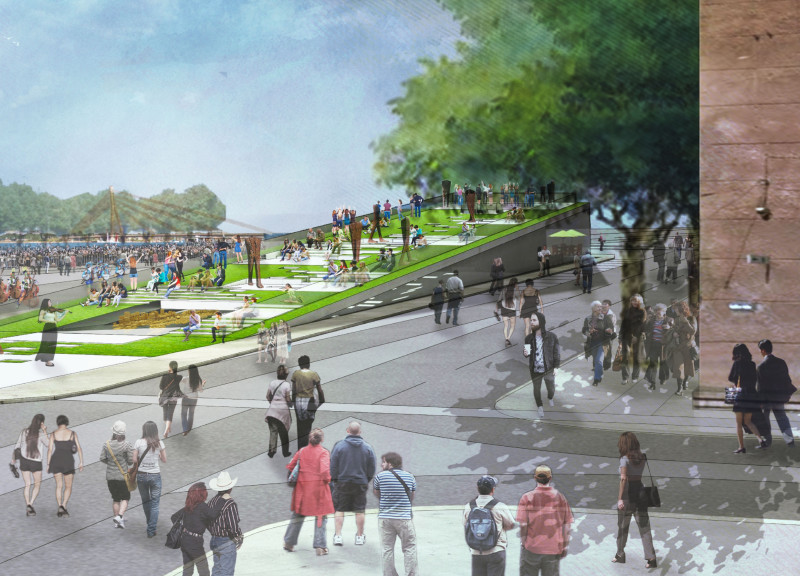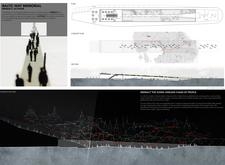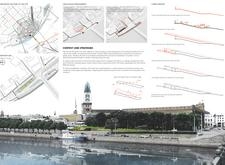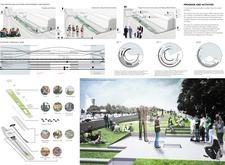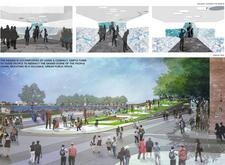5 key facts about this project
The essence of the design revolves around the concept of a linear pathway that replicates the original chain of human connection, urging visitors to physically engage with history. This pathway is carefully constructed, featuring a gradual slope that leads to an expansive area designed for shared gathering, allowing visitors to experience a journey through time. The experience culminates at an innovative reflective element—a mirror positioned at the end of the ramp. This design choice emphasizes the role of the viewer as part of the continuing narrative, fostering a connection between past and present.
Functionally, the Baltic Way Memorial incorporates a variety of spaces that cater to different community needs. The memorial is designed to accommodate educational tours that provide historical insights into the Baltic Way and its significance, as well as cultural events and performances that celebrate the rich cultural heritage of the Baltic nations. Additionally, the design features recreational areas that encourage social interaction, making it a versatile space that is accessible to everyone.
Materiality plays a crucial role in the overall impact of the project. The use of concrete provides structural integrity while allowing for a clean, modern aesthetic. Steel adds a contemporary touch, especially in sculptural elements, while glass introduces openness and transparency, symbolizing the ideals of freedom and unity. These materials are thoughtfully integrated into the landscape, which features greenery and plantings that enhance the site’s natural beauty and offer areas of respite for visitors.
Unique design approaches are exhibited throughout the project. The incorporation of educational models along the pathway not only informs visitors about the cities involved in the original demonstrations but also encourages exploration and interaction. This approach enhances the visitor experience by transforming passive remembrance into active participation. The integration of light and reflections within the memorial further evokes the themes of connection and commemoration, allowing the space to change throughout the day as the natural light interacts with various design elements.
The Baltic Way Memorial is a profound example of how architecture can intertwine historical significance with contemporary urban functionality. It demonstrates the potential of a memorial to engage communities and foster a sense of belonging. The design is rooted in the historical context of the event it commemorates, while also offering spaces for modern engagement and reflection.
For those interested in further exploring this architectural project, reviewing the architectural plans, sections, designs, and ideas will provide deeper insights into the concept and execution of the Baltic Way Memorial. This project exemplifies how thoughtful design can contribute meaningfully to public spaces and memorialization, enriching the urban fabric while honoring significant historical events.


